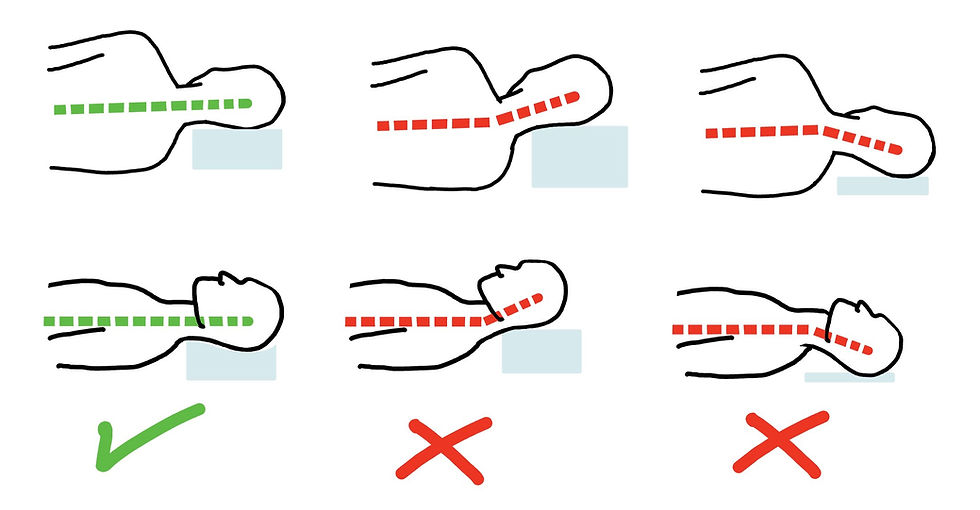Stay Out of Pain With the Right Pillow, Mattress, and Sleep Habits
- Dr. Austin Conn, DC
- Nov 21, 2023
- 2 min read
Recently, a lot of patients have asked about what pillow and/or mattress would be best for them. You shouldn't be waking up with tightness or pain after a night's rest. It's crucial to select the right pillow and mattress to support your spine, keep you out of pain, and contribute to a restful sleep.
Know Your Sleeping Position:
The first step to pain-free sleep is to understand your preferred sleeping position. While it's best to be a back sleeper, we would still prefer for you to sleep on your side instead of your stomach. Different positions require different levels of support to ensure your spine remains in a neutral and comfortable position. For instance, back sleepers generally benefit from medium-thick pillows with some give to conform to the shape of your head and neck to support the natural curve of the neck. Side sleepers may need a firmer pillow to keep the head and neck aligned with the spine. The height will vary, depending on the size of the person.
Pillow Height and Firmness:
The height and firmness of your pillow are critical factors for spinal alignment. Ideally, the pillow should fill the gap between your head and shoulders, without angling your head too high or too low. If someone were to view you from the side, your spine should be perfectly straight while lying down. In fact, shopping in person for a pillow could be your best option, as someone can give you feedback on how to position your neck as you lay down. While sleeping on your back, the angle of your chin is also important. The goal is to have your chin in a neutral position, rather than pointed to the ceiling or your chest. Use the picture below as a guide:

Notice that both the height and firmness of the pillow matter.
Consider Your Mattress:
Similar to your pillow, the firmness of your mattress matters. As a side sleeper, you generally want a softer mattress. This allows your shoulder to sink into the mattress, preventing your shoulders from rounding. If you sleep on your back, you generally want a mattress that is more firm. If it is too soft, the hunch of your back can sink into the bed, once again allowing for rounder shoulders. There needs to be a level of firmness that allows for your spine to remain neutral.
Tips for Low Back and Hip Pain While Sleeping:
If you sleep on your back and have low back pain, a pillow under your knees can make all the difference. A bend at the knees allows for tension in your lower back to be relieved, resulting in less pain and tension while you lay down to sleep. A fix for hip pain while side sleeping can involve a pillow between your knees. This keeps your hips in a neutral position while you sleep.
Pain in the morning isn't always due to your sleeping position, pillow, or mattress. To have a personal diagnosis, plan of care, and treatment, schedule at F1SportsChiro.com. Receive an hour of one-on-one treatment, where we can individualize the session for you and your goals.
Eliminate Pain. Prevent Injury. Improve Performance... and sleep better at Function First!
_edited.jpg)
コメント